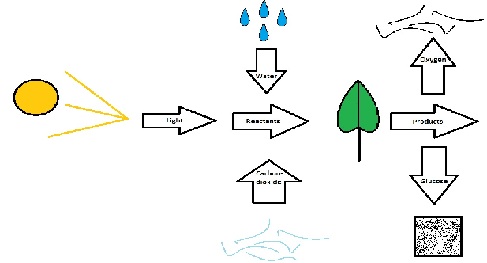Nutrition
Secale cereale is a plant. This means that the way
it acquires energy is through photosynthesis. It absorbs
sunlight, takes in water and carbon
dioxide, and converts them into glucose, or food, and oxygen, a
waste product. This makes rye a primary producer. Primary
producers allow for life on earth. If it wasn't  for
photosynthesis there would be no plants,
and if there were no primary producers, there would be no primary
consumers, or herbivores such as cows and deer, and without
primary consumers, there would be no secondary or tertiary
consumers, or animals that eat the consumers. Thus life on earth
ceases to exist, with the possible exception of some types of
bacteria.
for
photosynthesis there would be no plants,
and if there were no primary producers, there would be no primary
consumers, or herbivores such as cows and deer, and without
primary consumers, there would be no secondary or tertiary
consumers, or animals that eat the consumers. Thus life on earth
ceases to exist, with the possible exception of some types of
bacteria.
Once the glucose is made, it is moved throughout the plant via the phloem. The sugar is actively transported into the phloem and a concentration gradient forms which causes the nutrients to move from source to sink.
There are also several nutrients that plants need to live. Nitrogen, phosphorous, and potassium along with several other trace elements. In the case of rye, the levels of these nutrients in the soil can be much lower than in other cereal grains because of Secale cereale's extensive root system which can more easily absorb them.
Once the essential nutrients are picked up in the soil, they are moved, along with water, throughout the plant via diffusion. When water transpires, or evaporates from the leaves, it causes a higher ion concentration in the leaves, and this causes the water from the roots to rush up and equalized the ion concentrations. When the water moves to the top of a plant, it brings the nutrients essential for growth with it.
The combination of xylem and phloen to move sugars, water, and other nutrients is called vascular tissue. All of the vascular tissue in a rye plant is its circulatory system.
Continue on to Reproduction
I made the photosynthesis products and reactants graphic
